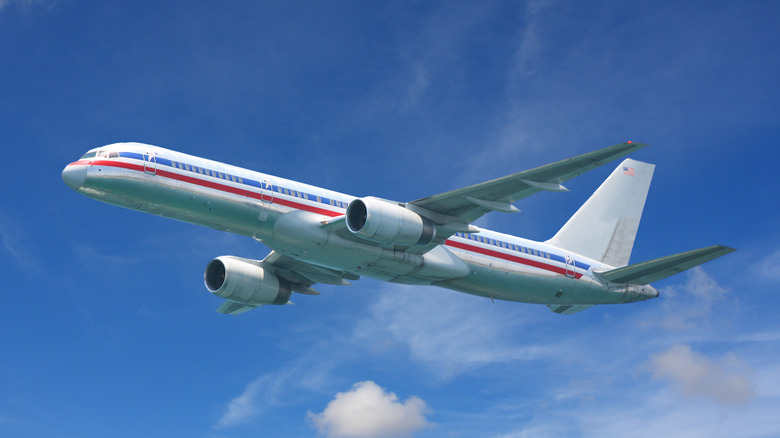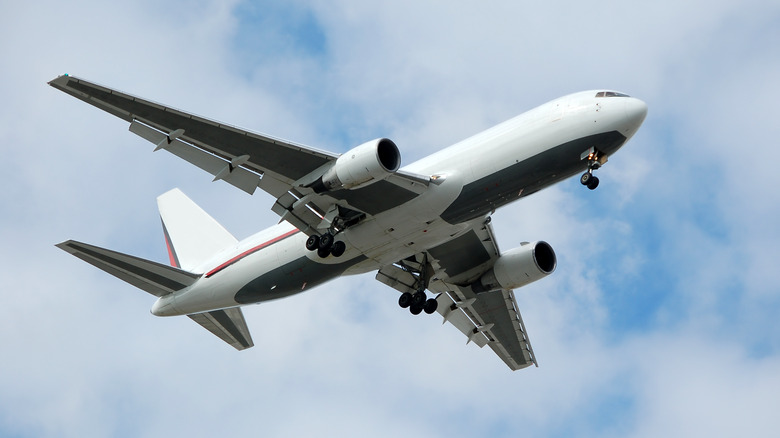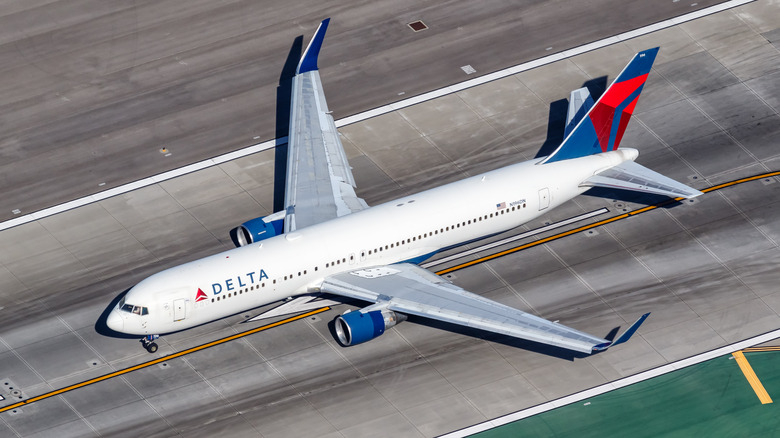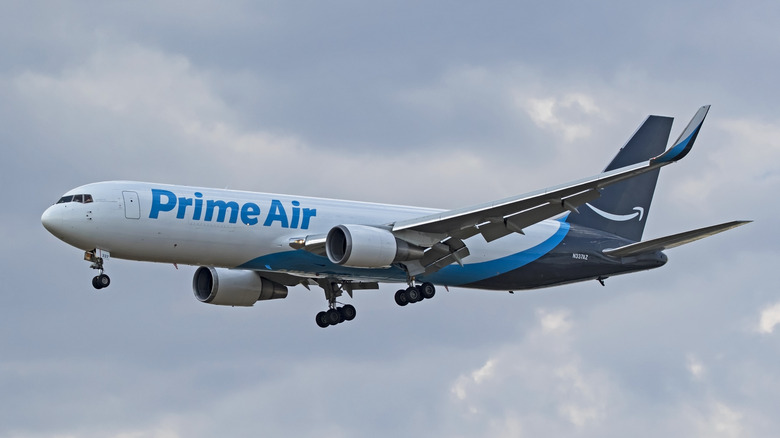Everything To Know About The Boeing 767 Jet
Detroit native William E. Boeing began his professional life in the lumber industry in Washington State and became fascinated with aviation after a 1910 trip to Southern California. Soon after, he earned his pilot's license but was disappointed with the quality of existing aircraft and set about building his own. The company he formed still bears his name, and as of 2022, $66.61 billion in revenue makes Boeing the world's largest airplane manufacturer. Boeing has its hands in civilian and military airplane design and construction as well as space exploration technology like launch systems, the International Space Station, and the X-37B, the United States' next-generation Space Shuttle.
Today, Boeing makes some of the world's most widely used commercial passenger and cargo planes, like the 747, 777, 787, and 767. Boeing's 737 Max has been in the news lately for a series of mechanical and structural failures, including an incident in January where a refrigerator-sized door plug blew out 16,000 feet over Portland, Oregon. None of the 177 passengers or crew members were injured, but NTSB chair Jennifer Homendy told CNN that it was a "very violent, explosive event" and flight attendants had experienced "a lot of trauma that they are working through."
Though the Boeing 767 has been used as a commercial airliner for companies like United Airlines since the 1980s, it would later be modified into a production freighter for well-known companies like Amazon. The 767 also boasts some innovations that would inspire other jets.
The 767 offered several improvements over its predecessors
Development of the 767 began along with the 757 in 1978, with United Airlines already committed to buying 30 of the new planes. Boeing had to expand its Everett, Washington facility to build the 767, and it shared many of its design features and key components with the 757. At the time, the 767's computer-assisted cockpit with a digital forward display and extended range that adhered to ETOPS regulation was ahead of its time and contributed to strong initial demand.
The 767 also had a new wing design that provided more lift and, in turn, a quicker ascent and fuel savings of as much as 30%. The 767's ride was also quieter than Boeing's previous aircraft, and the flight deck was similar enough to the 757 that pilots trained on one aircraft could move seamlessly to the other.
The 767 is now also used to ferry freight for the likes of Amazon and Federal Express or deliver fuel for the United States military and its allies. The last passenger 767 produced is owned by Air Astana, which is based in Kazakhstan. This particular aircraft was delivered in 2014. Today, the 767 still flies for airlines worldwide, including Delta, United, and Japan Airlines.
Delta flight attendants helped buy the airline its first 767
The first 767 went wheels up in September of 1981 as part of United's fleet, but the most compelling 767 origin story belongs to a Delta plane that was purchased the following year. The 1978 Airline Deregulation Act and the recession that followed caused many airlines to suffer a loss in revenue, including United and Delta. Former industry powerhouses Pan Am and Eastern went bankrupt, but Delta gave all its employees an 8.5% pay raise in 1982. In a reciprocal show of gratitude, three flight attendants — Jean Owens, Diane Carvelli, and Ginny Oxford — decided to help raise money to buy the airline a new 767.
More than 18,000 Delta employees pledged 2.5% of their paychecks to the cause, and the $30 million they raised was enough to start Delta's 767 fleet. That plane was christened the "Spirit of Delta" and flew more than 70,000 hours until it was retired in 2006 and moved to the Delta Museum in Atlanta. Since those early days, the 767's cockpit electronics have been updated, and many of the planes' cabins have been retrofitted to incorporate seatback screens and premium economy-class seating.
Amazon Prime Air operates 55 767s
The 767 was manufactured in three different fuselage lengths from 159 feet, 2 inches to 201 feet, 4 inches. The cabins have rows of seven seats in a 2-3-2 configuration, and capacity ranges from 181 to 375 passengers depending on size and configuration. Each cabin length is available in an extended-range version, and the three ER series 767s have a maximum range from 5,625 to 6,385 nautical miles. 767s are powered by engines made by Pratt & Whitney, General Electric, and Rolls-Royce.
The freighter variant of the mid-sized 300 series 767 has the lowest flight ceiling at 41,000 feet, while the 767 200 and 767 200 ER can go as high as 43,199 feet. The maximum speed of all variants is 493 knots, and the 767 can reach this speed at an altitude of 35,000 feet. In addition to the aforementioned airlines, El Al, American Airlines, and Continental Airlines have utilized 767s to ferry their passengers, and UPS, DHL, FedEx, and Amazon all use 767s to carry cargo.
Planespotters lists Amazon Prime Air as having the largest current fleet of active 767 cargo planes with 55. 29 Boeing 737s and a single Airbus 300 make up the rest of the Prime Air fleet. United plans to replace its passenger 767s with the 787 Dreamliner, while Delta has already ordered 400 Airbus planes with which to build a new passenger fleet.



